► CAR chats to Jens Sverdrup, Zenvo chairman and CCO
► Danish brand gearing up for Aurora hypercar twins
► Madness of Zenvo TSR rear wing won’t be repeated
If the Goodwood Festival of Speed proves nothing else, it’s that there’s no limit to the number of hypercars the world can sustain. Pagani, GMA, Koenigsegg and Czinger are the relative newbies; Ferrari, Lamborghini, Aston Martin, Lotus and Bugatti the legacy brands they all aspire to.
Danish manufacturer Zenvo also wants to join the fun, hosting the European debut of its new Zenvo Aurora at the 2024 Festival, following its initial unveiling at The Quail during the 2023 Monterey Car Week. But CCO Jens Sverdrup is aware of the scale facing it in terms of those rivals. ‘People are buying our car now. We have good customers, respectable people. But the customers we don’t have are the brand guys, the ones who buy Bugattis and others on the strength of the brand. We have car guys. They’re buying the car and the technology and the engineering.
‘I always say the Aurora is €2.6 million [around £2.2m]. It’s actually a €3.6 million [around £3m] car but we’re not charging for the brand. If you’re Aston Martin or similar, you can easily charge a million extra. This [the Aurora] is no less of a product, no smaller a programme than the Valkyrie.’
Tell us more about the Zenvo Aurora, then
The Aurora will be available in two flavours when it launches in late 2026 – the Agil for track use and the Tur for touring. And although both do without the preceding Zenvo TSR’s mad rear wing, both still have aero at their heart. The Agil in particular looks as if the wind tunnel development work was at the heart of the design process. Sverdrup told us that ‘we use aero going through the car rather than over it. It’s based on functionalism. Every part has a purpose and we’ve used the carbon fibre monocoque as part of the design.’
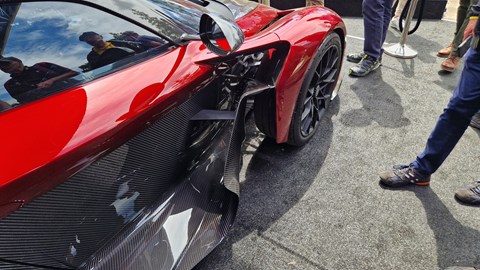
The Agil is a striking car in the flesh, with enough scoops and hollowed out sections to rival F1 cars at their most extreme. The Tur is more conventional, but by turning the quad-turbo, 6.6-litre V12 hybrid up to 11, it gets more power than the Agil at 1850bhp. This in a car with a claimed dry weight of less than 1450kg.
Zenvo has had to box clever with both in order to make the project feasible. Modularity is key, from the chassis to the engines. ‘They’re my babies. At the base of it was this idea of modularity, a modular platform so we can do many more models out of the platform, such as a junior hypercar, because it’s all carbon subframes.
‘Even the engines are [modular]. We are able to make V8s and V6s from the V12 because no matter how you spin it, it’s crazy crazy money to develop a V12 for a small company like ours. We have to make this last for another 20 years, at least.’
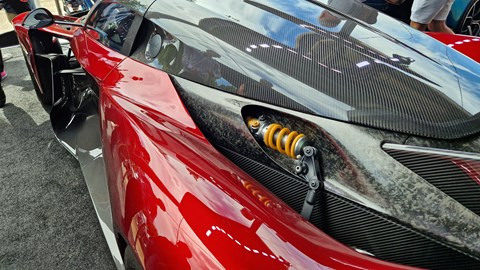
It’s a sensible strategy, as you might expect from the sensible Danes. Even the clients’ deposits go into an Escrow account so Zenvo can’t burn them on current R&D spend. Sverdrup admits it’s a tightrope at times, but he seems to have a clear-eyed vision as to how to ensure Zenvo doesn’t become another automotive vapourware project.
He has the experience and the right team around him – Sverdrup himself has worked at similar brands like Czinger, BAC and Koenigsegg while Jon Gunner, ex of Aston Martin Q, is now on board as CTO – to hopefully ensure it’s a success.
More choice for more billionaires.
A V12? Thought electric was the future…
Not quite, according to Zenvo’s head of design, Christian Brandt. At The Quail he told us: ‘when we talked to clients and asked them if they would be interested in an electric hypercar, the answer was a very definitive ‘no.’ And so we asked them whether they’d like a V6, V8 or V12, something like 90 per cent of them said V12.’
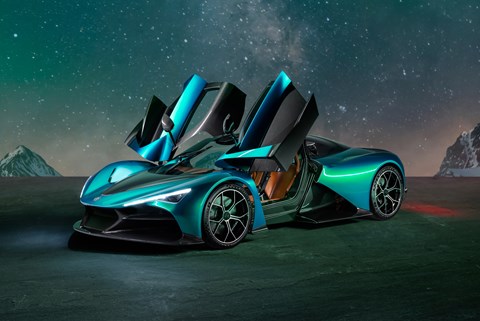
And what a V12 it is. The Aurora’s 6.6-litre 12-cylinder engine has been developed by MAHLE Powertrain and includes four turbochargers. As for power, Zenvo says it produces 1250bhp on its own and (good news, eco-conscious billionaires) it’s even Euro7-compliant. On top of that, the Aurora features a 200bhp e-motor on the rear axle, meaning a total of 1450bhp is available.
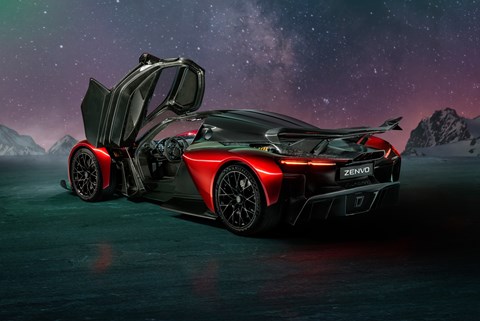
That powertrain configuration is for the Agil version (pictured in red) – the more hardcore, lightweight and track-ready variant of the Aurora. However, the new supercar also features a Tur (Danish for ‘Touring’) model pictured in blue, which includes two more e-motors driving power to each of the front wheels for a total system power of 1850bhp.
Zenvo says the Agil model is capable of a 0-62mph sprint in around 2.5sec and 0-125mph is possible in around 4.6 sec, as is a top speed of 227bhp.
As for the Tur, that additional e-grunt means a 0-62mph sprint is possible in around 2.3sec and Zenvo even says it can manage 0-248mph in 17sec, topping out at an estimated 280mph. That would make the Zenvo Aurora among the fastest cars in the world.
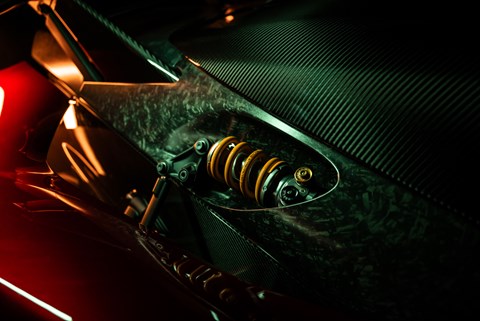
And those eye-popping performance numbers are backed up by some serious engineering. The Aurora uses pushrod front and rear double wishbone suspension, active aerodynamics (including an air brake on the Agil model), an electronic differential, carbon ceramic brakes and 20/21-inch front/rear magnesium centre-lock wheels.
Just 50 of each specification will be made.
How on earth do you design something that can go that fast?
With some difficulty, and a hell of a lot of digital systems, according to Brandt. ‘It was definitely a challenge. We realised that there was a reason why a Formula One car looks the way it does, or the way a Le Mans car looks the way it does,’ he says. ‘But we identified a number of design cues that we recognised as Zenvo design DNA, and we were fighting to keep those elements visible or intact in the design and seeing if the aero guys could make it work.’
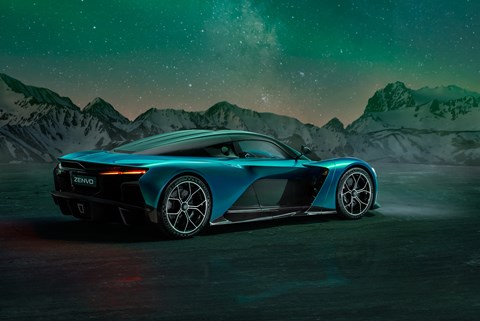
Brandt adds that he and the design team tried as hard as they could to stay away from what he describes as ‘monolithic’ car design in which aerodynamic details are simply bolted onto a basic shape: ‘as a designer from Denmark, you’re constantly beaten with the phrase ‘form follows function,’ so that was the deal basically – to see if we could create a car that was aerodynamically performing.
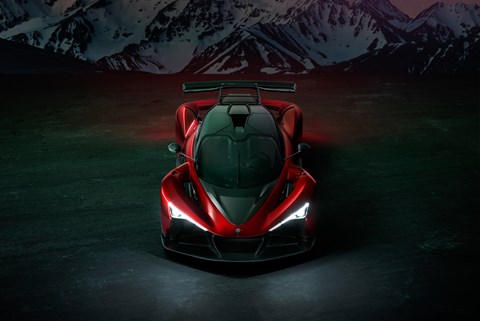
‘When the [Aston Martin] Valkyrie came out, their approach of doing all of the underbody aero flowing around the car – that was a huge inspiration for us,’ says Brandt, ‘and when it comes to the exterior design of the car, we actually started to look a little outside of the car sector looking at things like high-speed motorbikes, or track day cars like the BAC Mono or Ariel Atom – that sort of deconstructed approach to the hypercar.’
Naturally all of that focus on aerodynamic efficiency has meant some serious stats have been spat out of all of the digital software helping to create the Aurora. ‘The data is still in the computer, and it’s before we get the real car on the road and start doing testing, but the numbers say it creates up to 880kg of downforce at 250km/h (155mph), which is around 100kg more than the McLaren Senna does at the same speed. And that’s with a drag coefficient that’s even less than the Senna.’
That big engine and all of those motors – it’s gotta be heavy…
Not really, no. Extensive use of carbonfibre means the Agil model has a dry weight of less than 1300kg, with the tri-motor Tur model clocking in at less than 1450kg. So much work has been put into developing the carbonfibre structure that Zenvo plans on using it to its fullest.
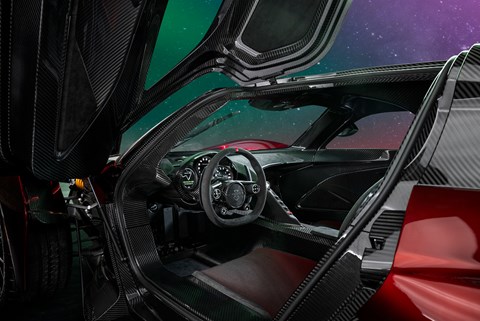
‘You could argue that the most expensive parts of the development were the monocoque and the engine,’ says Brandt. ‘Being a small manufacturer, we can’t just trash that in six years time or something – we’ve developed in a modular way where we can use it again for future projects.’
Future projects, huh? Like what?
‘Well we have talked about doing a junior hypercar,’ says Brandt, ‘which is our vision for the next car. Higher volume, lower price, that kind of thing.
‘And then there’s the question of the powertrain. We say people want engines now, but you can see there are movements in the industry towards electric so that may change. But overall, my hope and my future fight is to make sure Zenvo doesn’t turn into a company that all of a sudden starts making an electric SUV, for example! Especially for special cars of this class, I still think there’s a future for the combustion engine.’